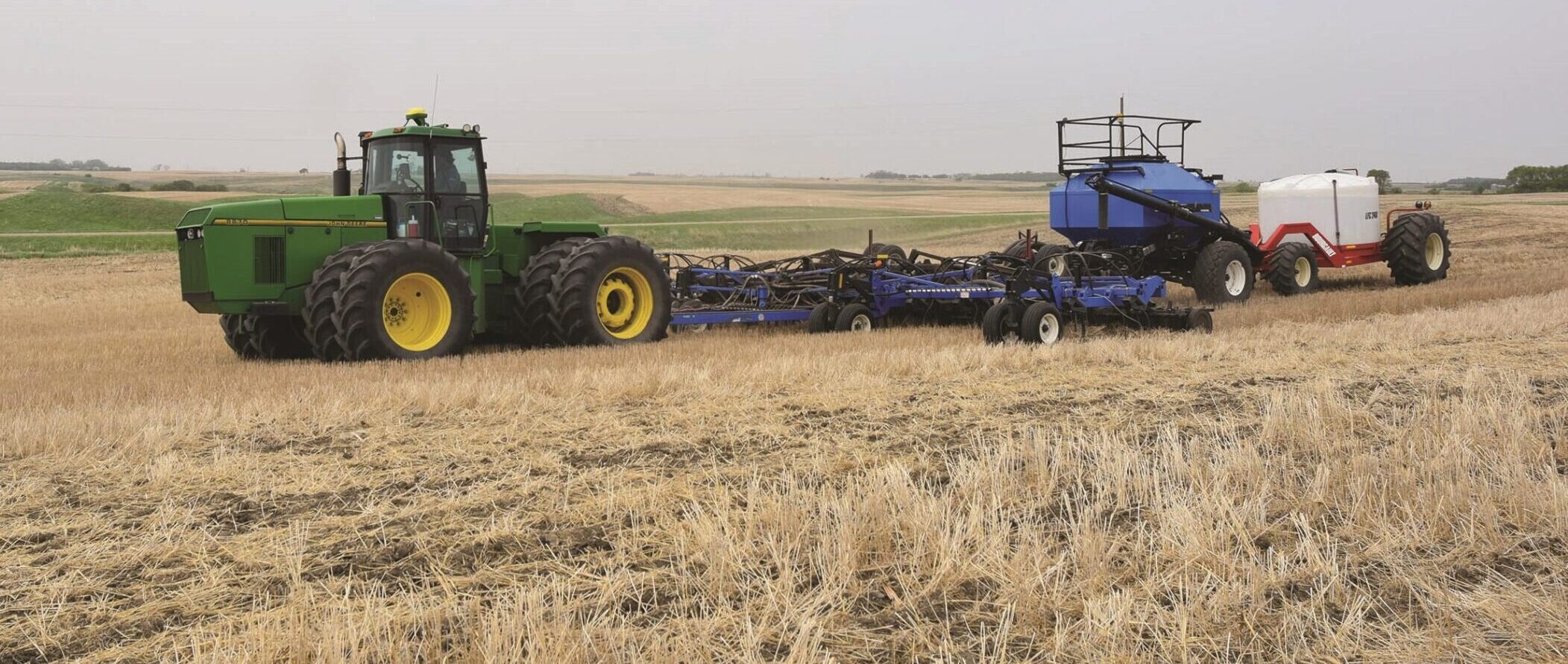Seed Right
A drill is for seeding. So, do one-pass air drills that apply both seed and all fertilizer do a disservice to canola stand establishment?
That question came up during a Canola Council of Canada (CCC) agronomy team discussion on yield-limiting factors and what we can do about them. Summer heat, flea beetles and low plant counts are three major reasons for lower yields, and rapid emergence of a uniform crop of five to eight plants per square foot might help reduce risk for all three. More plants reduce the flea beetle risk. Rapid growth reduces the flea beetle risk. Vigorous crop establishment could mean the crop flowers before the hottest days of summer. And low plant counts, perhaps due to varying seed depth or too much seed-placed fertilizer, mean the crop cannot reach its yield potential.
Our modern seeding tools can achieve these objectives…if operators put a priority on the seeding operation. Farmers have one chance (assuming re-seeding is less than ideal) to achieve the critical stand objectives: uniform depth, firm moist seed bed and ideal timing.
Farmers have one chance (assuming reseeding is less than ideal) to achieve the critical stand objectives: uniform depth, firm moist seed bed and ideal timing.
Manitoba agronomist Tanis Sirski, in her January Canola Digest article, shared her key to higher canola yield: “Growers who achieve consistent top-level yields have the machinery prepped and inputs on hand so they’re ready when good seeding, spraying and harvest conditions come along.”
If field conditions are perfect for canola seeding, but the farm is waiting on an anhydrous tank or sulphur fertilizer, do they seed anyway and top up the missing fertilizer with in-season application? If a farm plans to apply 250 pounds per acre of urea, could they achieve more timely seeding by deep banding some of that urea in the fall or pre-seed broadcasting with an enhanced-efficiency treatment? If a drill has single shoot openers with all seed and fertilizer going into the same band, should that fertilizer be applied by other means to protect those precious seeds? I’m not saying the answer to these questions has to be “yes.” But if seed survival and plant stands are subpar, a farm may want to explore their answers to these questions.
In the CCC agronomy team discussion on yield-limiting factors, I asked CCC agronomy specialist and fertilizer lead Warren Ward whether we could achieve 4R and emissions objectives by moving some fertilizer application off the drill. He said the move to deep banding in the fall or pre-seed broadcast after spring thaw would be “lateral” in terms of 4R best management practices, even with all precautions to limit losses. In-season application better matches fertilizer placement with crop uptake but, like the other options, requires a second pass.
CCC agronomy specialist and crop establishment lead Jason Casselman was at AgriTechnica in Germany in November. Many companies promoted modern drills that featured a “train” of seedbed prep tools, seed openers, packers and soil smoothers. Though some seed drills could apply some fertilizer, that was not the priority. “These drills provided precise seed metering and perfect seed placement,” Casselman says. “The key is that they don’t hurt any sensitive seed with fertilizer.”
These tools, Casselman noted, fit with the worked ground and multiple passes ingrained in European agriculture. For the Canadian Prairies, in general, Casselman says, “The one-pass system with super-low disturbance is the right way to do it.”
Chris Holzapfel is research manager at the Indian Head Agricultural Research Foundation in Saskatchewan. Holzapfel presented on “Seeding canola: Getting it right” at Ag Days in Brandon, Manitoba, in January. I asked Holzapfel what treatments or factors tended to improve seed survival? His answer: “Seeding into warmer soils, narrower row spacing, and minimal or no seed-placed fertilizer.
However, Holzapfel says a separate pass for fertilizer may not be the right move. “Putting fertilizer into the ground in a separate pass often makes the seed bed worse and broadcasting nitrogen often results in poor uptake, lost nitrogen and lower yields,” he says. “I’d suggest that the drill is also a fertilizing machine as alternative options frequently come with drawbacks of their own.”
Short of moving fertilizer to a separate pass, how do we make sure the drill does its seeding job as well as possible? Have all fertilizer ready so seeding can proceed when fields are ready. Place seed into a firm seedbed not fractured by a deeper fertilizer shoot. Set the drill for uniform seed distribution and depth. Place all fertilizer, except perhaps a small starter rate of phosphate if soils are moist, in bands outside the seed row. When new air drill tanks can hold over 1,000 bushels of fertilizer, this should not take away from the fact that the drill is, first and foremost, a seeding tool.





